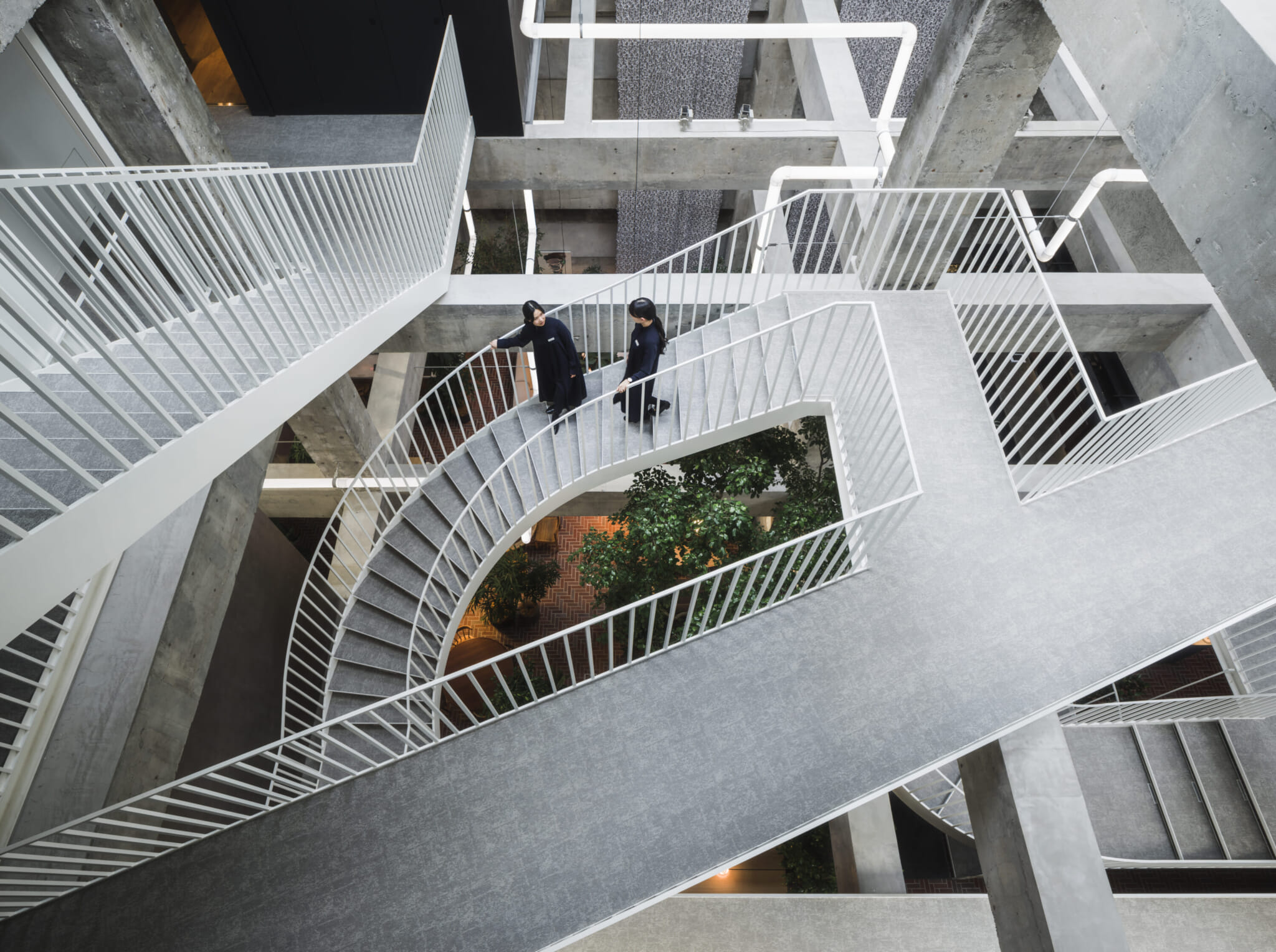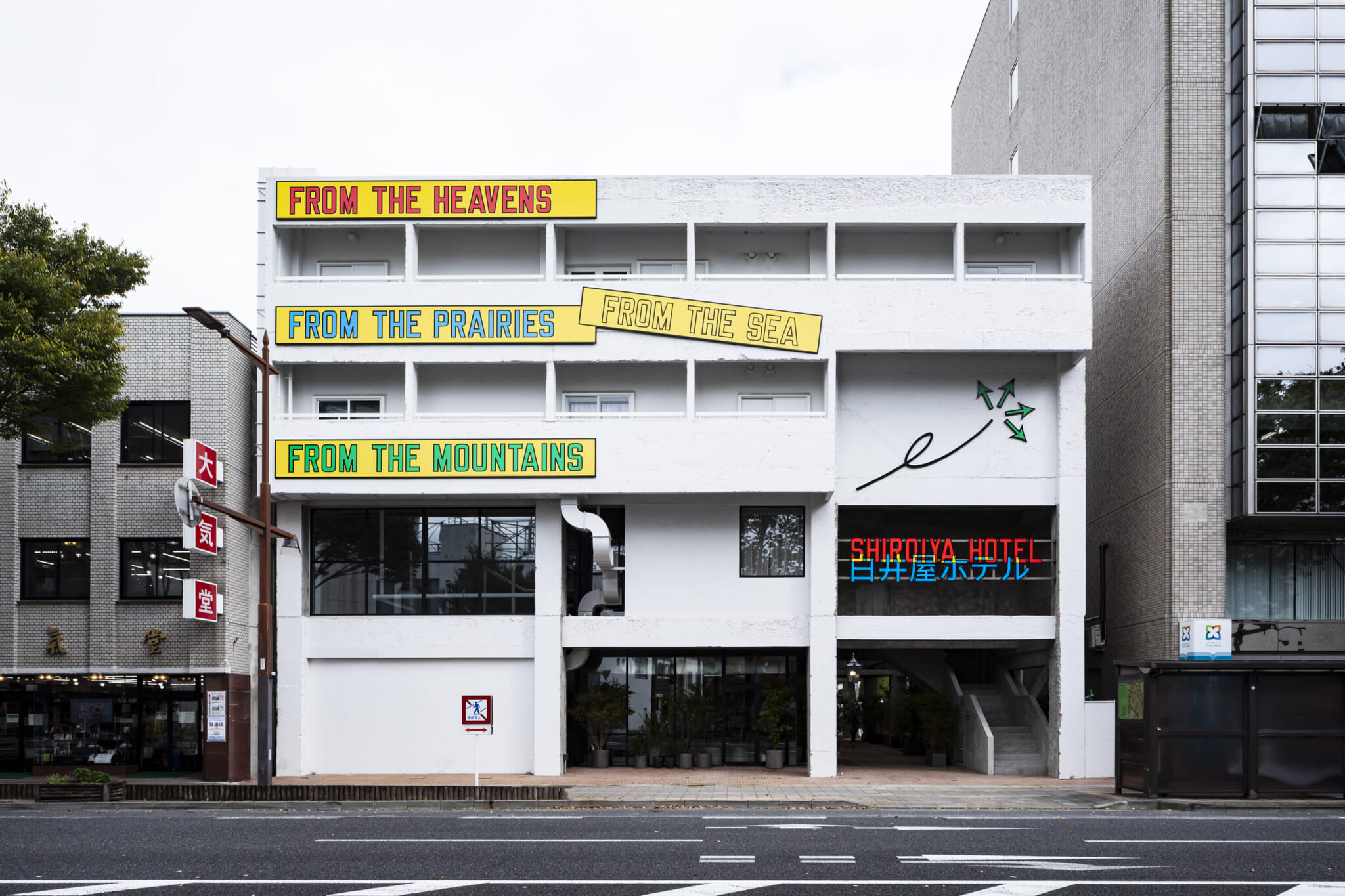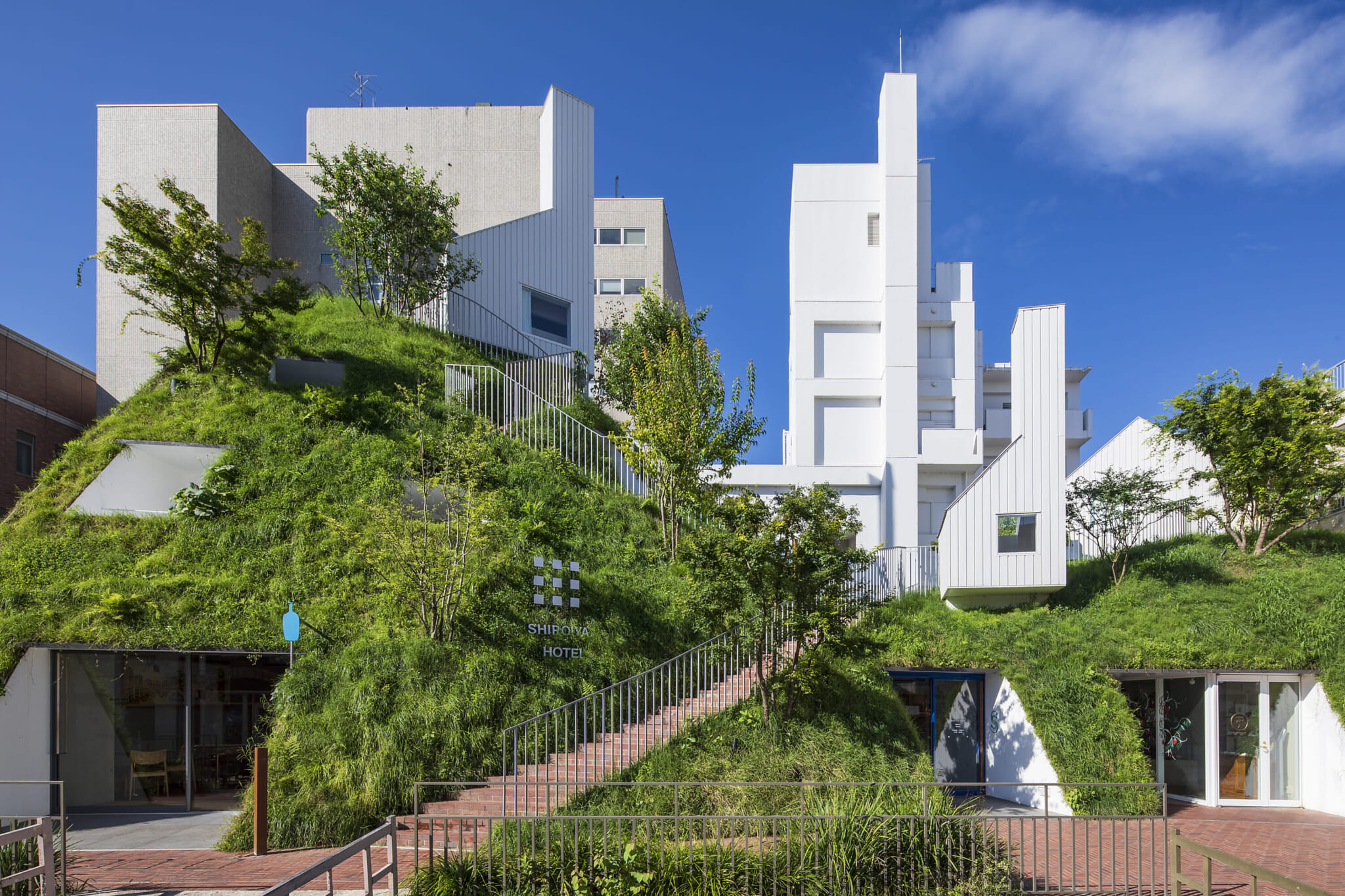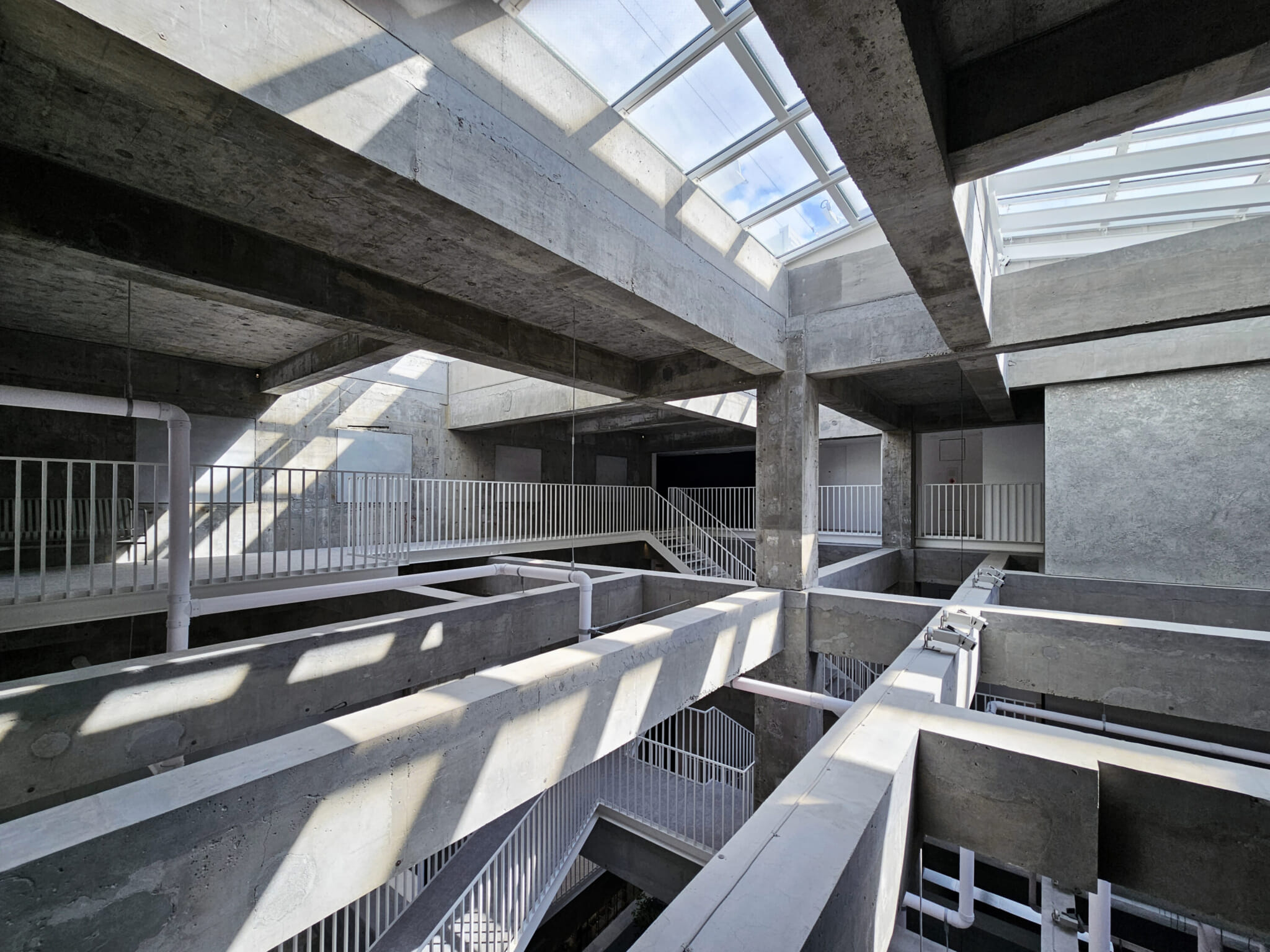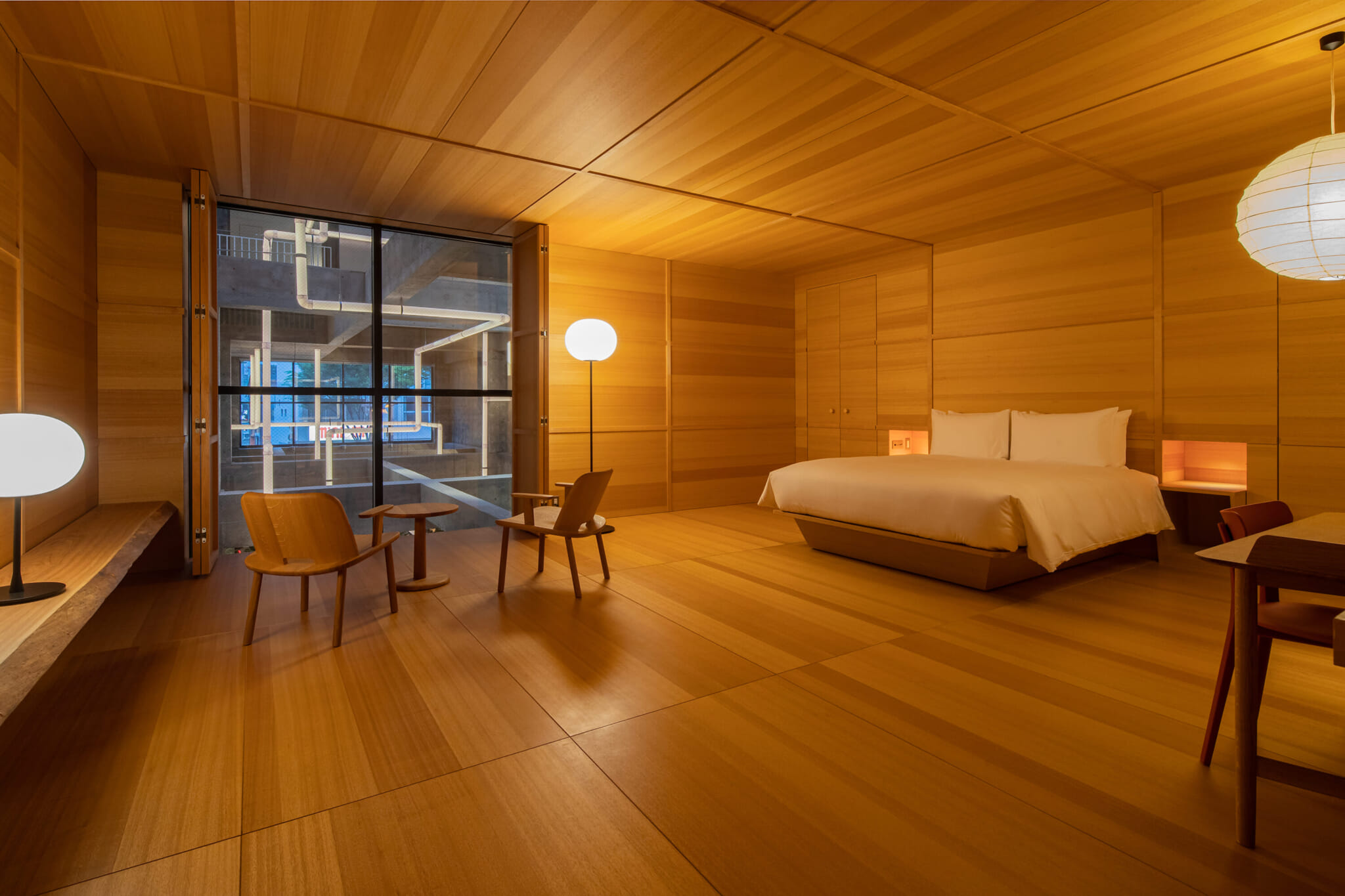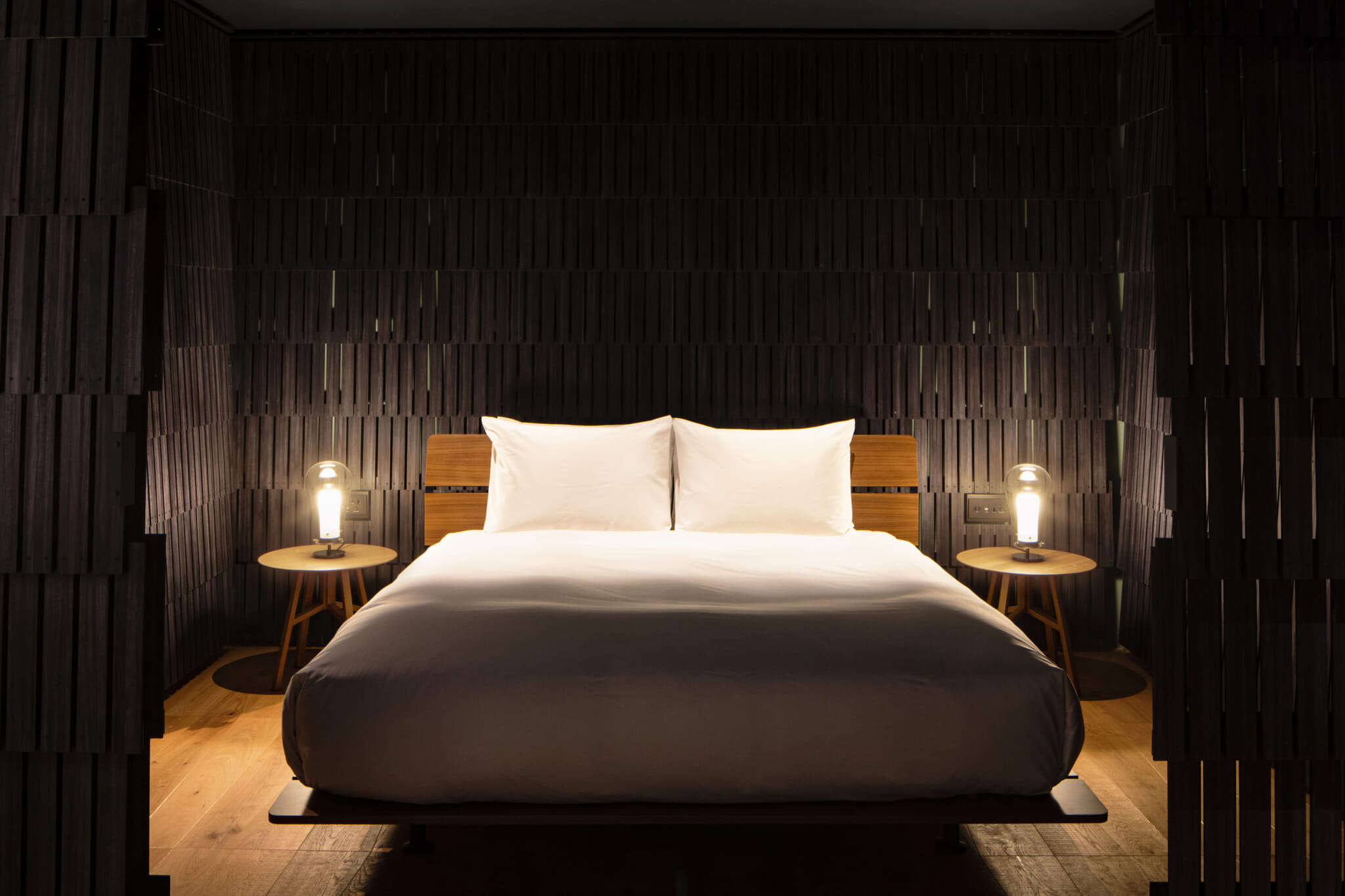The story of Shiroiya Hotel starts during the Edo period, when Maebashi was best known as a strategic castle town. When Japan opened its ports to foreign trade in the mid-19th century, Maebashi flourished as a leading manufacturer and exporter of silk. The city’s prosperity drew the exclusive clientele to the then-called Shiroiya Ryokan, including members of the former Imperial family, and influential artists such as novelist Ogai Mori. This continued until the 1970s, when Shiroiya Ryokan pivoted to the hospitality business.
In 2008, the establishment closed its doors, putting an end to its 300-year history. The landmark was to be completely torn down and possibly replaced by a condominium tower. Some community-minded youths reached out to Maebashi native and current CEO of Jins Holdings Hitoshi Tanaka to see if he could help. He decided to buy the ryokan with his own money — and without any hospitality experience. It was a risky business decision on paper, but as Maebashi’s history has shown, everything is possible when you collaborate with the right people.
Tanaka reached out to architect Sou Fujimoto, an acquaintance from a roadside shop project that was never fully realized. Fujimoto had recently completed his first residential project — also in Maebashi — for Tanaka’s older brother. The renovation and reinvention of Shiroiya Ryokan was a very different challenge, but one Fujimoto was keen to tackle. He was in love with Maebashi’s history, its community, and excited about what this project could inspire. “Existing old buildings contain time and memory,” says Fujimoto of the Shiroiya Hotel project. “The accumulation of time and memory feels more like the workings of nature than a mere man-made object.”
Art and History Hidden in Plain Sight
Fujimoto’s work often serves as a prime example of Japan’s modern architectural movements. Shiroiya Hotel, while bearing Fujimoto’s signature geometric shapes and asymmetrical designs, is a harmonious hybrid of old and new — if you know where to look.
Two buildings make up Shiroiya Hotel: the Heritage Tower and the Green Tower. Whether you’re visiting or staying, you’ll likely first enter via the Heritage Tower. Look up and you’ll be immediately in awe at the structure’s unique construction, which boasts a four-story-high atrium, its walls stripped bare to reveal 45-year-old concrete support beams. Sun rays flood the open space through overhead skylights, giving the entirety of the hotel a warm glow that shifts throughout the day. “I thought it would create a completely new and unexpected experience while inheriting the existing building,” says Fujimoto. “I also thought that the atrium would create a sense of scale like an indoor city square, which would also lead this project to the urban meaning.”
At first glance, the labyrinthine staircases and bridges that connect the floors above give the Heritage Tower an urban, modern feel, but every slab of concrete reveals workers’ markings from Shiroiya Ryokan’s renewal project in the 1970s.
Shiroiya Hotel is, as a whole, a testament to Japanese architecture, but within it are dozens of museum-quality art pieces that anyone can enjoy. Fujimoto and Tanaka collaborated with over 30 artists from around the world, with pieces commissioned specifically for this project. Women of the arts were not forgotten in this endeavor — textile designer Yoko Ando worked on the tactile, three-dimensional designs of the curtains you’ll find in the Heritage Tower rooms.
With some select collaborators, the work expanded to the design of one-of-a-kind rooms. “The Jasper Morrison and Michele De Lucchi rooms were created by the world’s best designers and I think we were able to create a dense space in this hotel,” Fujimoto says.
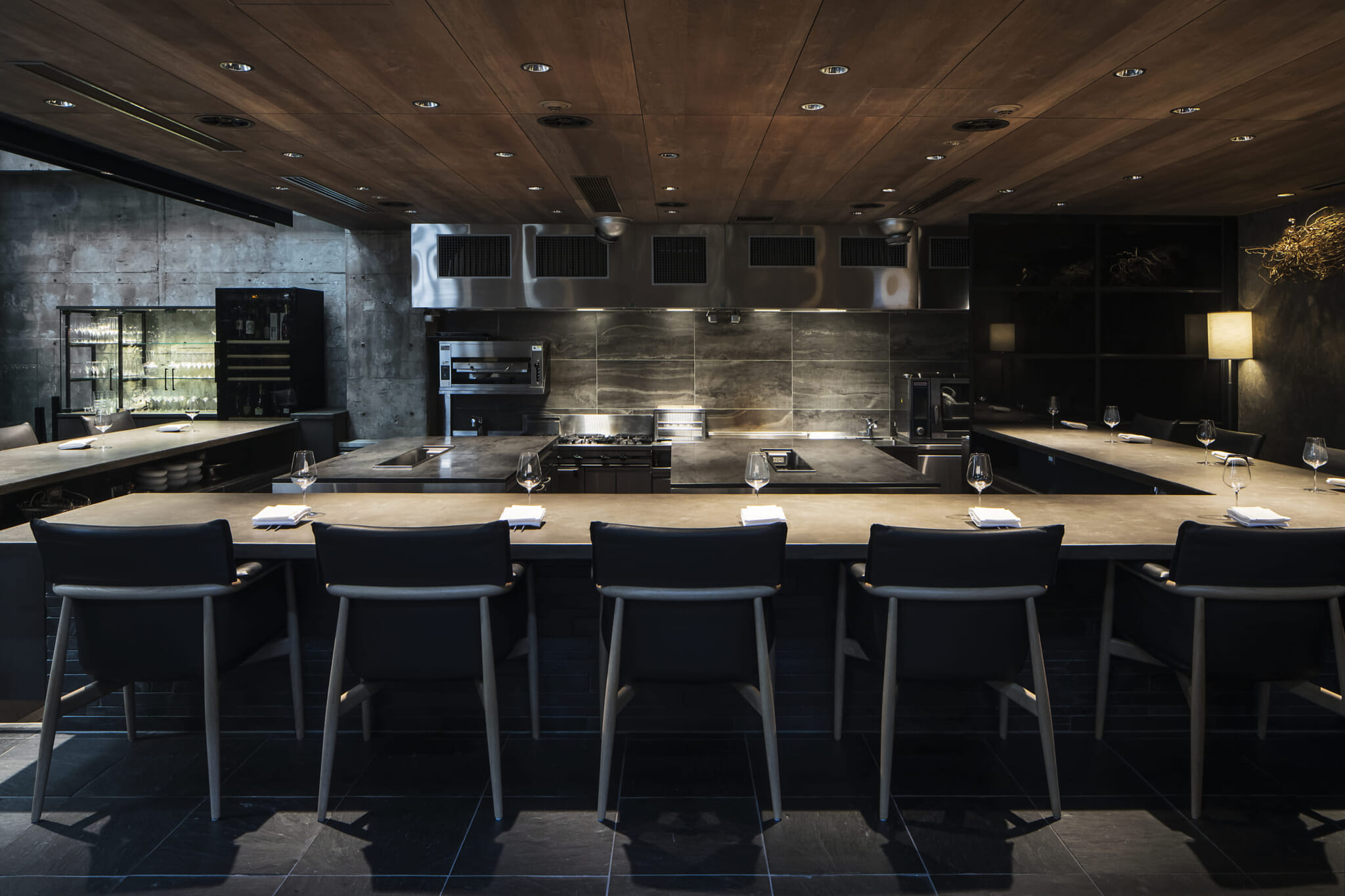
The Restaurant, located on the first floor of the Heritage Tower, only seats 14 guests to provide an intimate experience. | Photo by Shinya Kigure
Taste Everything, in Every Way, All at Once
Though the surrounding neighborhood offers many culinary delights, guests don’t need to venture far in search of delicious fare. Chef Hiro Katayama, who grew up in Gunma Prefecture, works under the supervision of Hiroyasu Kawate, the founder of Michelin-starred restaurant Florilège in Tokyo. Katayama uses only the finest local ingredients and experiments to create edible works of art served at Shiroiya Hotel’s The Restaurant. The produce, though seemingly ordinary at first glance, is carefully selected and procured via local farmers to ensure the best quality. The chef’s creativity further enhances the ingredients to make exceptional dishes. As an example, there is an appetizer almost entirely made using shin-tamanegi, a sweet Japanese onion, that is served roasted, puréed, and in ice-cream form.
It’s recommended that guests opt for a drink pairing experience — both alcoholic and non-alcoholic options are available. Sommelier Yoshimitsu Kojima plays with base and top notes of just about anything to match the dinner course. Where Katayama works with familiar ingredients, Kojima plays with niche botanicals, making every drink a unique delight.
A dinner at The Restaurant isn’t complete without sommelier Kojima detailing the rural Okinawan inspiration behind his latest concoction, or how he perfected his chilled chai tea recipe by making it over 100 times. Every element has a story, creating an anthology by the end of your feast.
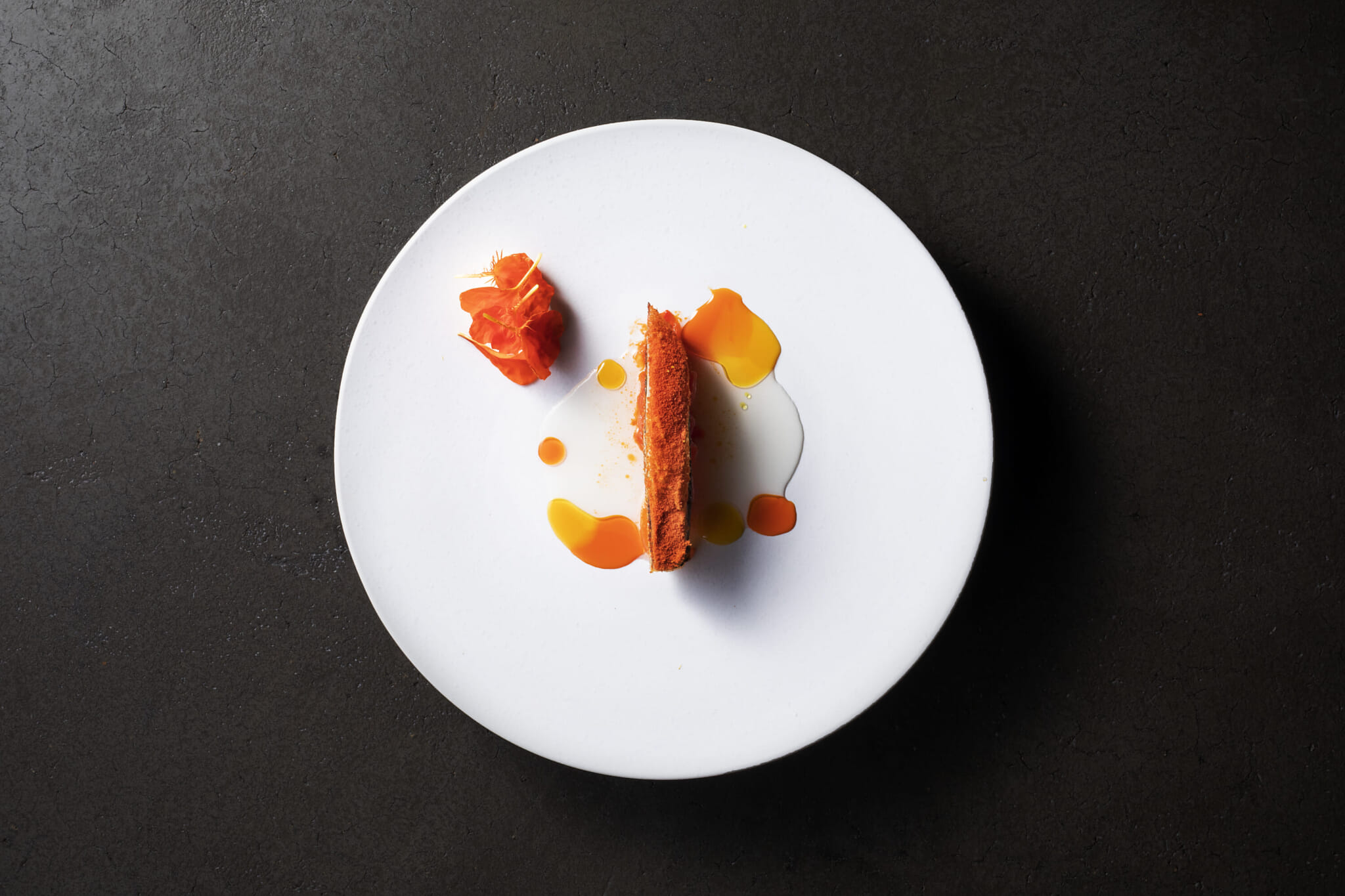
PHOTO BY SHINYA KIGURE
At Shiroiya Hotel’s bakery you can find hard-crusted breads fresh out of the oven, and a fruit tart shop led by award-winning patisserie chef Miya Enmeiji. If you’re a fan of third-wave coffee, you can always wander to the Blue Bottle Coffee Shiroiya Café on the north side of the hotel premises. For something more exclusive, there is The Bar Matcha-Tei, a space specifically designed for savoring exquisite cocktails. Located in a nook inside the Green Tower, it was conceived by contemporary artist Hiroshi Sugimoto and architect Tomoyuki Sakakida. Behind the bar, Tsuyoshi Kimura creates cocktails to please your eyes and tickle your taste buds.
The Sounds and Smells of Maebashi
A local pianist performs on Sundays and Wednesdays afternoons at The Lounge, encouraging locals and visitors to mingle. At any other time, light jazz — and what sounds like a tropical storm — play softly from speakers cleverly hidden throughout the Heritage Tower’s first floor. “The acoustics are both a quiet and comfortable noise,” explains Fujimoto. “The size of the atrium and the appropriately placed greens create a place where the sound reverberates, making you feel like you are in the forest and at the heart of the city at the same time.”
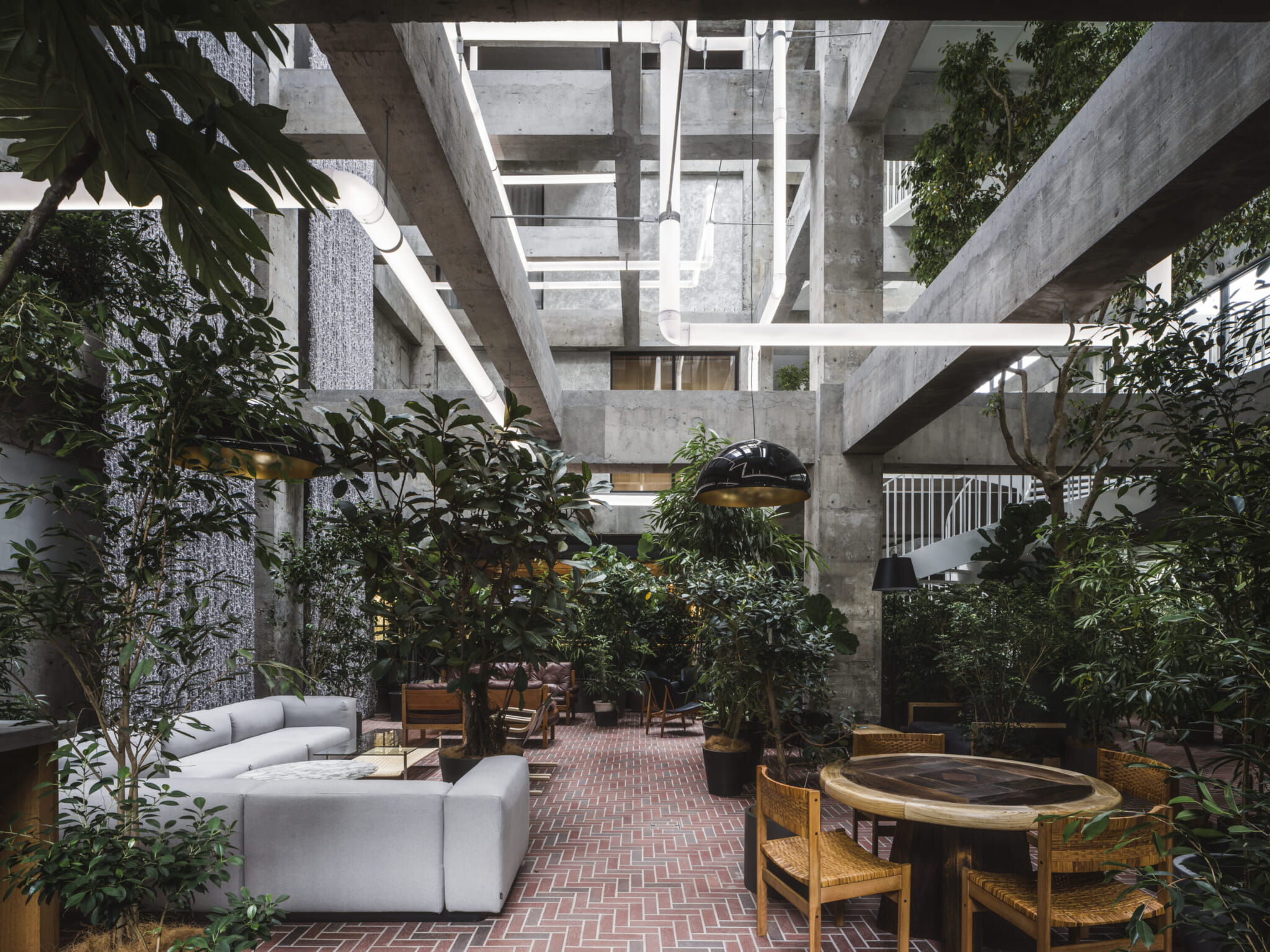
Photo by Shinya Kigure
The plants and the open kitchens of The Restaurant and The Lounge create a relaxing and comforting space, delighting even the most sensitive of noses. There is also an original fragrance that is spritzed — designed by Fujimoto himself. Surround yourself with more foliage on the Heritage Tower’s outdoor terrace, which faces the Green Tower. One of Shiroiya Hotel’s most sticking features, the tower’s facade is covered in grass, flowers, and other plants. Bees and other pollinating insects are to thank for a lush blanket that covers the building and fills the air with a light scent of fresh greenery. Fujimoto suggests paying extra attention to the natural scents of the green hill as they shift with the turn of the seasons.
Shiroiya Hotel’s well-being initiatives also revolve heavily around scent. Part of the hotel’s main attractions is its saunas, located inside three white huts that decorate the Green Tower’s hills, inspired by the riverbanks of the old days. One sauna makes aroma its main focus and has a mélange of essences meant to relax from the inside out. The Mist Sauna features a soothing experience that uses medicinal herbs, a practice that has centuries of history in Japan.
There are two other saunas for more classic spa aficionados: a proper Finnish sauna and a bed sauna, for those who prefer to hone in on sweating out impurities, stress and just about anything that might be preventing you from being your best self.
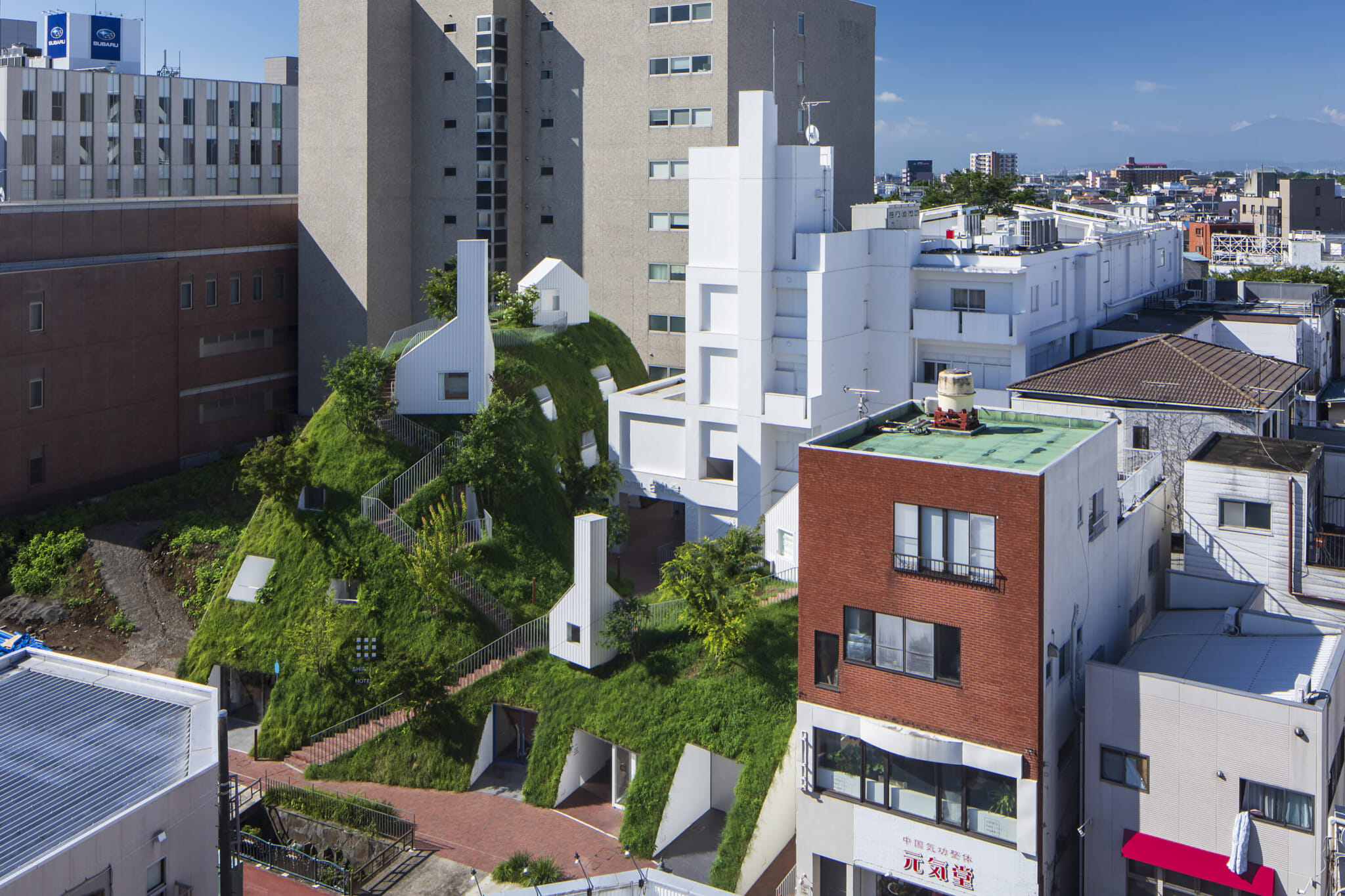
Photo by Shinya Kigure
Where Good Things Grow
Shiroiya Hotel opened in December 2020, after six and a half years of renovation. In the following two years, and despite the challenges of the pandemic faced by the hospitality industry, it amassed a cult following for its design, its food, and its services to the growing creative community in Maebashi. This was, in part, Fujimoto’s main motivation, “While bringing [the city]’s historical, urban, and alley charm into architecture, bringing in new values such as art and greenery, I think we are playing an important role in rooting in and opening up a new Maebashi.”
The philosophy behind Shiroiya has propelled a new generation of artisans — bakers, brewers, painters, musicians — to come together and bolster the Gunma Prefecture capital, all breathing new life in every way possible, from abandoned shopping arcades to bar alleys. Shiroiya Hotel is only the first step toward a completely revitalized city that should be on your travel radar.
For more information and to book a stay, head to the Shiroiya Hotel website.

